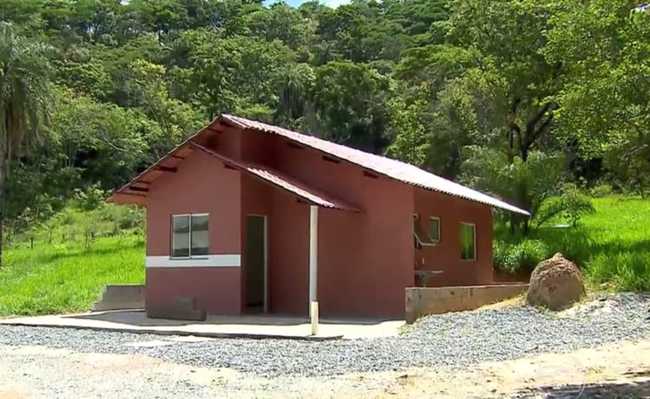Vertical farm: what is it, advantages and disadvantages
The set of large vertical vegetable crops spread across urban centers was named vertical farm

"Chicago O'Hare Airport Ver" (CC BY-SA 2.0) by chipmunk_1
The vertical farm concept was coined in 1999 by biologist Dickson Despommier of Columbia University in New York. However, Dickson was not the first to idealize it, since in 1979 the physicist Cesare Marchetti had already developed something similar.
A vertical farm is a spatial set intended for the production of food and medicine in vertical layers. This practice, designed mainly for large urban centers, has been seen as the technology of the future to feed the next generations. The idea is to use automated installations with as little environmental impact as possible. The alternative is considered sustainable by its supporters. Opponents of the technique, on the other hand, claim that the financial costs do not outweigh the benefits.
In a vertical farm, in addition to the production of food and medicine in vertically stacked layers, vertically inclined surfaces and/or integrated into other structures such as skyscrapers, warehouses and containers can be used. The techniques used are basically inland agriculture and environmentally controlled agriculture technology (CEA), in which all environmental factors can be controlled. These facilities use artificial light control, environmental control (humidity, temperature, gases, etc.) and fertigation. Some vertical farms use techniques similar to greenhouses, where the use of natural sunlight can be complemented with artificial lighting and optimized with metallic reflectors.
Creators
Ecologist Dickson Despommier defends the installation of vertical farms on the grounds that vertical farming can help reduce hunger. According to him, changing the way of using land from horizontal to vertical makes it possible to reduce pollution and the use of energy incorporated in agricultural processes.
According to Despommier, while vertical agriculture depletes the natural landscape, it offers in return the idea of "skyscraper as spacecraft". Crops would be mass-produced within hermetically sealed artificial environments and could be built anywhere, regardless of context.
Defenders of the vertical farm concept emphasize the possibility of integrating renewable technologies (solar panels, wind turbines, water capture systems, etc.) as a differential for this type of culture. The vertical farm would be designed to be sustainable and allow nearby inhabitants to work on it.
In contrast, architect Ken Teang proposes that farm skyscrapers be mixed-use. Yeang proposes that instead of hermetically sealed mass-produced agriculture, plant life should be cultivated outdoors, on roofs for example. This version of vertical farming is based on personal or community use rather than mass production. Thus, it would require less initial investment than Despommier's "vertical farm".
Controversy
Those in favor of installing vertical farms in cities say that by reducing the energy costs needed to transport food to consumers, vertical farms could significantly alleviate climate change produced by excess atmospheric carbon emissions. On the other hand, critics of the concept argue that the additional energy costs needed for artificial lighting, heating, and other vertical farm operations would outweigh the benefit of the building's proximity to consumption areas.
Opponents of the vertical farm concept question its profitability. Pierre Desrochers, a professor at the University of Toronto, concluded that the vast expanses of vertical farm cultivation are just a new fad in the market and that the facilities would have to make a considerable profit to justify their existence in cities. A simpler concept, rather than trying to stack farms, would be to just grow crops on the roofs of existing buildings. Without taking into account that, if the energy needs of the vertical farm are met by fossil fuels, the environmental effect can make the project unfeasible. Even developing a low-carbon capacity to feed farms may not make as much sense as simply leaving traditional farms in place and burning less coal.
Atmospheric pollution
Depending on the electricity generation method used, the vertical farm greenhouse can generate more greenhouse gases than field products, in large part due to higher energy use per kilogram of production. As vertical farms require much more energy per kilogram of production than ordinary greenhouses, mainly due to increased lighting, the amount of pollution created will be much greater than that produced in the field. Thus, the amount of pollution produced depends on how the energy used in the process is generated.
light pollution
Greenhouse growers typically exploit photoperiodism in plants to control whether they are in the vegetative or reproductive stages. As part of this control, the producers periodically turn on the lights during the night. Greenhouses are already a nuisance to neighbors due to light pollution, so a 30-story vertical farm in a densely populated area would certainly face problems from this type of pollution.
chemical pollution
Hydroponics greenhouses regularly change the water, which means that there is a large amount of water that contains fertilizers and pesticides that needs to be disposed of.
Protection against weather related issues
Crops grown in traditional outdoor agriculture are more likely to suffer natural weather, such as undesirable temperatures or amounts of rain, monsoons, hailstorms, tornadoes, floods, fires and severe droughts. Protecting crops from the climate is increasingly important as global climate change takes place.
As the vertical plant farm provides a controlled environment, the productivity of vertical farms would be largely climate independent and protected from extreme weather events. Although the controlled environment of vertical farming negates most of these factors, earthquakes and tornadoes still pose threats to the proposed infrastructure, although this is also dependent on the location of the vertical farms .
Resource conservation
Each area unit on a vertical farm could allow up to 20 area units of outdoor farmland to return to its natural state, and reclaim farmland due to the development of original farmland.
Vertical agriculture would reduce the need for new agricultural land due to overpopulation, thus saving many natural resources currently threatened by deforestation or pollution. Deforestation and desertification caused by agricultural encroachment on natural biomes would be avoided. As vertical farming brings crops closer to consumers, this would substantially reduce the amount of fossil fuels currently used to transport and refrigerate agricultural products. Producing food indoors reduces or eliminates conventional plowing, planting and harvesting by agricultural machines, also powered by fossil fuels.
stopping mass extinction
Removing human activity from large areas of the Earth's surface may be necessary to delay and eventually halt the current processes of mass anthropogenic extinction of terrestrial animals.
Traditional agriculture is highly disruptive to wildlife populations living on farmland and their land, and some argue that it is unethical when a viable alternative exists. In comparison, some argue that vertical farming would cause very little harm to wildlife and allow disused farmland to return to its pre-agricultural state.
Impact on human health
Traditional agriculture is a dangerous occupation with particular risks that often affect the health of human workers. Such risks include: exposure to infectious diseases such as malaria and schistosomes, exposure to commonly used toxic chemicals such as pesticides and fungicides, confrontations with dangerous wild animals such as poisonous snakes, and serious injuries that can occur when using large industrial equipment . Whereas the traditional agricultural environment (mainly slash-and-burn based) inevitably contains these hazards, vertical agriculture, on the other hand, reduces some of these hazards.
Today, the American food system makes food fast and unhealthy, while fresh produce is less available and more expensive, encouraging bad eating habits. These bad eating habits lead to health problems like obesity, heart disease and diabetes. The increased availability and subsequent lower cost of fresh produce would encourage healthy eating.
Urban growth
Vertical agriculture, used in conjunction with other technologies and socio-economic practices, could allow cities to expand while still remaining an autonomous system. This would allow large urban centers to grow without destroying forest areas. In addition, the vertical agriculture industry would provide employment to these expanding urban centers. It would also be a way to help reduce the eventual unemployment created by the dismantling of traditional farms.
plans
The brainchild of the idea, Despommier, argues that the technology for building vertical farms currently exists. He also claims the system can be cost-effective and effective, a claim evidenced by some preliminary research posted on the project's website. Developers and local governments in some cities have already expressed a strong interest in establishing a vertical farm. O Illinois Institute of Technology is working out a detailed plan for Chicago. It is suggested that prototype versions of vertical farms be created first, possibly at major universities interested in vertical farm research. But there is also a concrete example, such as the first vertical farm in Europe, developed in 2009, at Paignton Zoo, in the United Kingdom, with the aim of producing food for the animals in the park.
Sources: Nymag, Verticalfarm and Wikipedia










